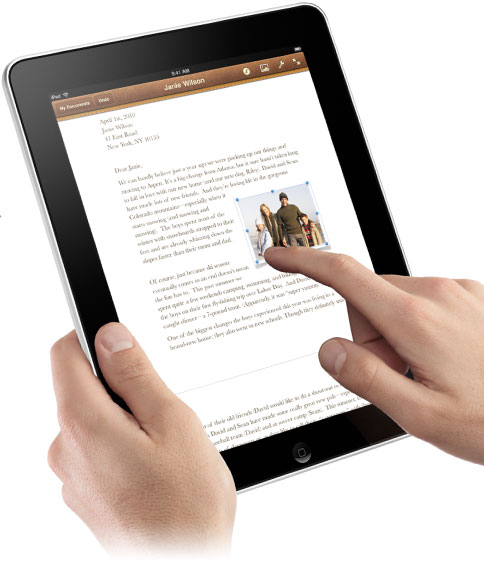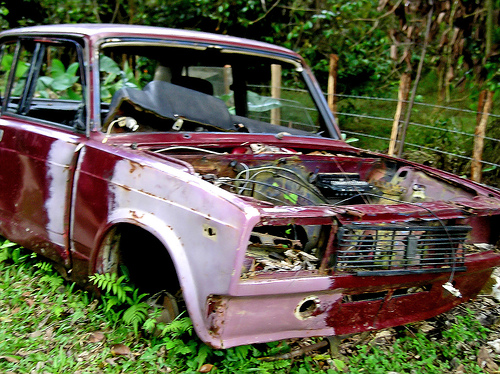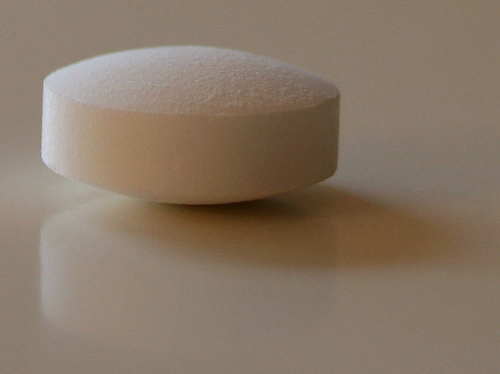Should I Buy a Cheap Tablet Computer?
The success of the Apple iPad came as a surprise to a lot of people. Apple didn't invent the tablet computer. There have been several attempts in the past to move us 'beyond' the traditional desktop PC and laptop, not least by Apple themselves with the ill fated 'Newton' back in the 1990s. The general feeling was they're a solution to a problem that doesn't exist.

I must admit, I was pretty sceptical when the rumours of a tablet from Apple first surfaced, but they do have a history of picking the correct moment to launch something, as well as getting the product right. Think of the mp3 player. These had been out a while before the iPod turned up, but they were poorly implemented and clunky to use. The iPod with the iTunes store made it such an enjoyable experience, that the term 'Mp3 player' has been lost forever to the word 'ipod'!
The iPad has been with us two years now and has been a resounding success. For those that don't have one, but do want one, the comment has always been that they are too expensive and instead, temptation comes in the form of the myriad no-brand cheap tablet devices that have sprung up from as little as £65 on Amazon, Play.com and across the High Street, with £150 being a more typical price point there. Compare that with £400 upwards for an iPad and there is a smell of a bargain around.
So are these tablets a viable alternative to the ipad? Well, yes and no. But in most cases I'm afraid it's no.
Let's start with the reasons not to buy cheap. Firstly if you're buying one of these tablets expecting an iPad level of experience, don't. You'll be disappointed. Apple devices are expensive, it's true - but if you look at the branded competition (Samsung with their Galaxy range, Motorola with the Xoom and Sony with the 'P') you'll see that they're having trouble beating Apple on price. For the price, the iPad is one slick operation. The interface is intuitive and beautiful, the screen vibrant, colourful and responsive. The battery will last you all day as you trawl through the 100,000 apps available from the 'App Store' for download. You'll get none of this with a cheap no-brand tablet.
Typically, the tablet will have a 7" screen. This is not a problem in itself, there are quality tablets at this size and some prefer it, but the screens are usually of the type used in portable DVD players. The advantage to the manufacturer is that they are plentiful and cheap, the trade-off however, is what looks fine for a DVD in the back of the car looks awful when used for a computer interface. The resolutions are low, usually around 800*480, lower than most smartphones and the colours are weak and wash out easily in bright light.
The conversion to a touchscreen has also been done on the cheap in most cases. The iPad uses a screen of a 'capacitive' type, which means it is designed to respond well to your fingertips. Swiping left, right, up and down all produce instant results and are part of the fun of the device. It will also recognise several fingers at once, allowing you to control with 'gestures', for example pinching to zoom the screen in. Not so the no-brand tablet. In most cases, you'll find the screen is of a 'resistant' type. This is a much older technology designed to respond to plastic styluses. It will work with your finger, but you'll find yourself prodding, often several times, before you get the desired response.
Another reason you'll be prodding, is because the processor (the brain of the tablet) is likely to be the absolute minimum the manufacturer felt they could get away with. Maybe the screen did recognise that last finger-jab, it's just the processor couldn't keep up!
One of the reasons I think people easily fall into the trap of wrongly buying a cheap no-brand tablet is the operating system. The operating system is the software that is providing you with the interface to the tablet and it will run the web-browser and other programs for you. Apple's iPad uses 'IOS 5'. An operating system owned by and exclusive to them and it's used across their range of devices to great success. The big contender is 'Android'. Created by Google and essentially given away for free to manufacturers, it has been a massive success on smartphones, but has some way to go in the tablet market.
The confusing thing is, the big brand expensive competitors use Android and the cheap no-brand ones use . . . Android! So you're getting the same thing for less, right?
NO! I'm afraid not. The big brand stuff runs the 'Honeycomb' version of Android. Soon to be superseded by 'Icecream Sandwich' it's an operating system designed purely for tablets and it's pretty good. It's gaining in popularity and support for downloadable 'apps' (extra programs to run) is increasing fast. However, the no-brand cheap tablets are, without exception, running Android 2.3 or earlier. In fact some run 1.6 which is several years old now. The trouble with these is they were designed for mobile phones. The interface, which is now dated, does not scale well up to 7" screens, let alone anything larger and certainly all the apps running on it were intended for a screen less than 3".
Speaking of apps, I mentioned before that the iPad App Store has over 100,000 apps for the iPad. Well, Android doesn't have that many, more like 20,000. Still sounds like a lot, right? Well, if you buy an unbranded tablet, you won't have access to any of them. Google set conditions for manufacturers to meet before they're allowed to run any of the Google apps (for example their email or maps tools) or have access to the Android App Store from the device. Basically none of these cheap devices will, which means you're stuck with whatever the maker bothered to install.
In short, unbranded £100 odd tablets are slow, clunky and frustrating. They're a false economy and you'd be better off spending a little more and getting something that you'll actually continue to use after the novelty has worn off.
So, that should be the end of the article, but if you scan back to the first paragraph, I actually said yes and no. So there are occasions where one of these cheap and nasties could be worth it? Actually yes, there are.
If you like your gadgets and are brave enough to tinker, there is an upside to these devices and the fact that they use Android. Android is "open source" software, which essentially means that the code is available to the public and can be freely modified. Large online communities have built up around Android and alternative versions of the software are available to those who know what they're doing. The best known of these is Cyanogenmod and it's possible to buy a cheap tablet, install Cyanogenmod on it and enjoy better functionality and performance than the device originally shipped with. I won't go into any more detail here, as those of you who would like to pursue this should now head over to the Cyanogenmod website, see which devices they support and start researching your options.
To the rest of you, beware cheap tablets, they're a largely false economy! Should you wish to ignore me and purchase, take a look at the Scroll Excel and the Andy Pad Pro, which at least make a reasonable stab at it.
If you enjoyed this article, please share it using the buttons below.
Jp :)
Picture Credits:




